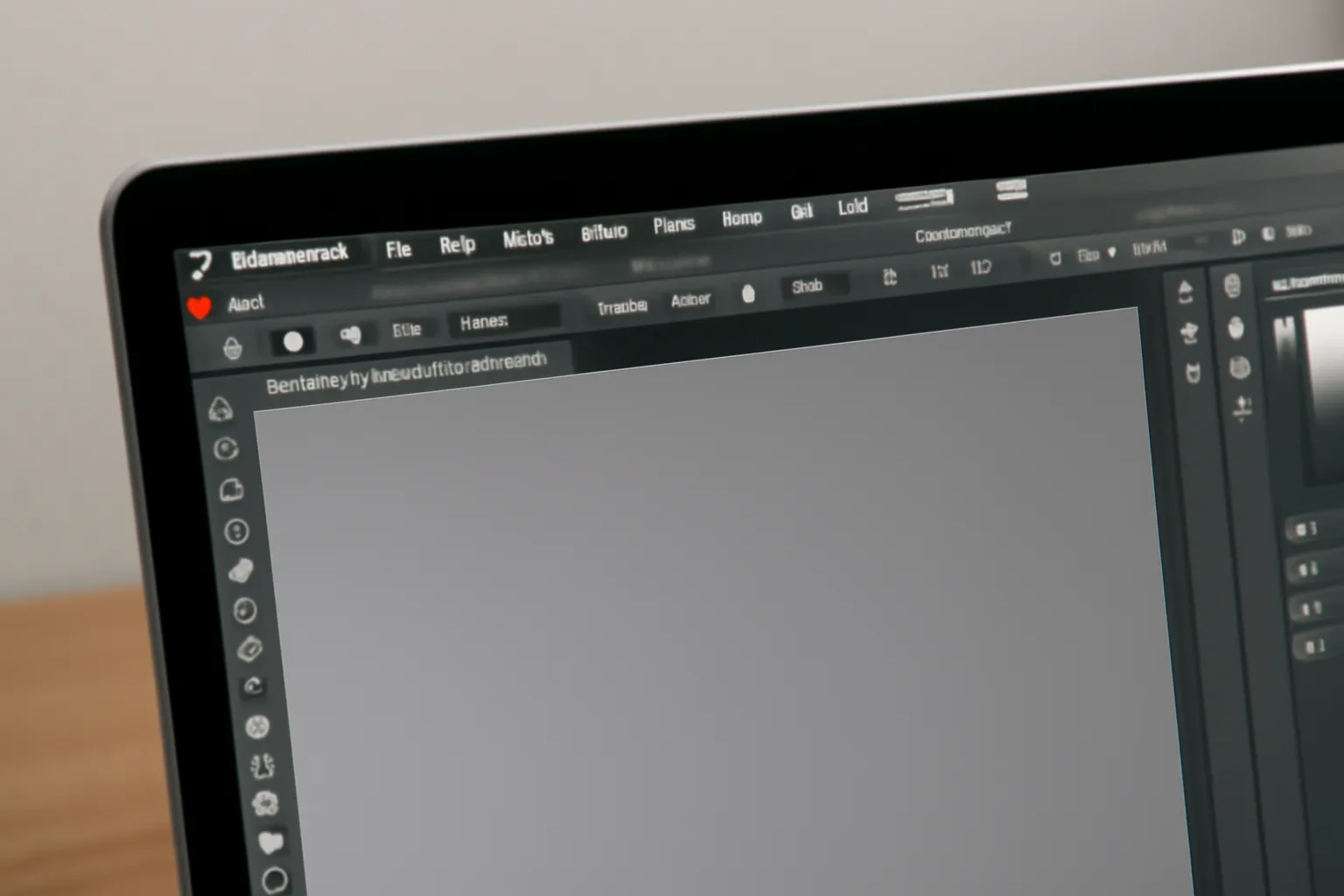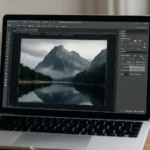Is your Photoshop menu bar acting up on your MacBook? Whether it’s disappearing, too small, or not behaving as expected, here’s your complete guide to fixing it. Keep reading to explore all the details!
The Photoshop menu bar is one of the most essential tools for users of Adobe Photoshop, especially when you’re working on a MacBook. From accessing vital features to customizing your workspace, this small toolbar plays a huge role in the user experience. However, you may encounter issues with it from time to time, such as the menu bar disappearing or the size not being ideal. Let’s walk through everything you need to know about the Photoshop menu bar, including how to customize, troubleshoot, and fix common problems.
MacBook Photoshop Menu Bar: The Basics
When using Adobe Photoshop on a MacBook, the menu bar is located at the top of the screen and gives you access to a range of commands, tools, and settings. It typically includes essential menu items like File, Edit, Image, Layer, and so on. These menus allow you to quickly access commands for working with images, applying filters, modifying layers, and much more.
Why is the Menu Bar Important?
The menu bar on Photoshop is not just for aesthetics—it’s a key feature for efficient workflow. Instead of hunting for options across multiple panels or windows, you can quickly select a function from the menu. This is crucial for both beginners and professionals. For example, when creating new projects or saving files, the menu bar offers immediate access to commands. Similarly, the Window menu lets you switch between various panels, like tools and adjustments, without losing focus.
Customizing Your Menu Bar
A great advantage of working in Photoshop on a MacBook is the ability to customize the workspace. The Window menu provides options for adjusting the layout, enabling or disabling specific toolbars, or even changing the size of the menus. By tweaking these settings, you can create an interface that aligns with your personal preferences and boosts your efficiency.
Tip You can access the Photoshop Preferences by clicking Photoshop > Preferences > Interface to change the behavior of the menu bar and other interface elements.
Photoshop Menu Bar Description: Key Features You Should Know
When you first open Photoshop on your MacBook, the menu bar may seem a little overwhelming. But each section has its specific purpose, and once you get the hang of it, navigating Photoshop becomes much smoother.
Understanding the Main Menu Items
-
File This is where you can open, create, save, or close your projects. It also allows you to access import/export functions.
-
Edit Under this menu, you’ll find various options for undoing actions, copying or pasting selections, and adjusting preferences.
-
Image The Image menu is used to adjust image size, resolution, and other properties.
-
Layer This menu provides commands to work with layers such as creating new layers, changing layer visibility, or merging layers.
-
Type If you’re working with text in Photoshop, the Type menu offers various options to adjust font style, size, alignment, and other text properties.
-
Select Here, you can select specific parts of the image for editing.
-
Filter The Filter menu contains various image effects that can enhance or alter the look of your work.
Hidden Functions
One of the lesser-known functions of the Photoshop menu bar is the ability to use keyboard shortcuts for many commands. You don’t always have to navigate to the menus manually. For instance, pressing Ctrl+Z (or Cmd+Z on Mac) will undo your last action, which is a quicker alternative to using the Edit menu.
Tip You can customize keyboard shortcuts under Edit > Keyboard Shortcuts to suit your preferences.
Photoshop Menu Bar Fixed: Common Issues and How to Solve Them
Despite being a crucial part of Photoshop, the menu bar can sometimes behave erratically. Users frequently encounter problems such as the menu bar disappearing, not appearing at all, or not showing up with the correct options. Fortunately, most of these issues have quick fixes.
The Menu Bar Disappears
If you find that the menu bar has suddenly vanished from your MacBook screen, don’t panic. This problem can arise from several factors:
-
Full-Screen Mode Photoshop might have switched to full-screen mode, which hides the menu bar. To exit full-screen, simply press Esc or use the shortcut Ctrl+Cmd+F.
-
Corrupted Preferences Sometimes, corrupted preferences can cause glitches. Resetting Photoshop’s preferences will fix this. Hold Cmd+Opt+Shift while launching Photoshop to reset preferences.
Fixing the Size of the Menu Bar
Photoshop on a MacBook sometimes displays a menu bar that’s either too large or too small, which can be frustrating. Here’s how to resolve this issue:
-
Adjust Display Settings If the problem persists, check your MacBook’s Display settings by going to System Preferences > Displays. Choose a scaled resolution that fits better.
-
Change UI Scaling In Photoshop, go to Preferences > Interface, and you can adjust the UI Scaling for the menu bar. This can make it easier to read and more suited to your screen size.
Photoshop Menu Bar Shortcut Key: Speed Up Your Workflow
If you’re looking to improve your Photoshop experience on a MacBook, learning the right shortcut keys can save you tons of time. The menu bar itself has a series of shortcuts that make navigation much quicker.
Essential Photoshop Shortcuts for the Menu Bar
-
Ctrl+N (Cmd+N on Mac) Open a new document.
-
Ctrl+S (Cmd+S on Mac) Save your current document.
-
Ctrl+Shift+S (Cmd+Shift+S on Mac) Save your document with a different name.
-
Ctrl+Z (Cmd+Z on Mac) Undo the last action.
-
Ctrl+Shift+Z (Cmd+Shift+Z on Mac) Redo the last undone action.
Tip You can customize these shortcuts as per your needs, which can further streamline your workflow.
Conclusion
The Photoshop menu bar is much more than just a toolbar at the top of the screen. It’s an integral part of your design and editing workflow, especially when using Adobe Photoshop on a MacBook. From accessing tools and features to customizing the workspace, the menu bar ensures that you can work efficiently and effectively.
Whether you’re dealing with disappearing menus, resizing issues, or wanting to speed up your work with shortcuts, this guide has provided you with the necessary tools to troubleshoot and optimize your Photoshop experience.
Remember, the more you customize and understand your menu bar, the more you’ll enhance your productivity. So go ahead, explore the settings, and make Photoshop work for you!






